Finding Information About Your Account Settings
If you need help finding your username and other configuration settings, see our article, Setting up an Email Reader.
How to Set Up Your Email on Android Email app
Note that these tutorials are for the default Android Email app. However, when Google released the Lollipop Android update, they switched the default email client app to Gmail instead of the Email app.
Phones that operate on a Lollipop or newer Android update no longer offer the Email app.
- Open up the Android Email application
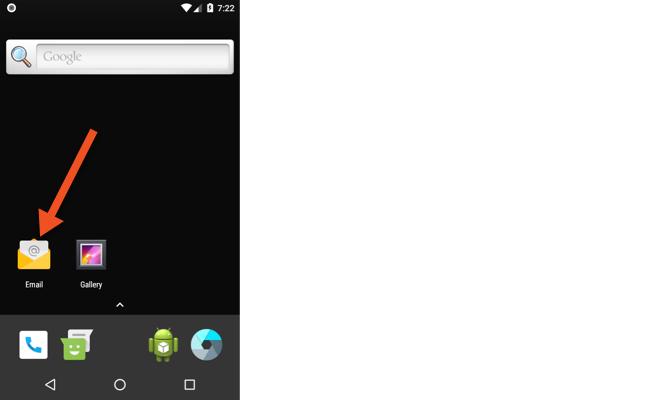
- Enter your email address, then tap Next
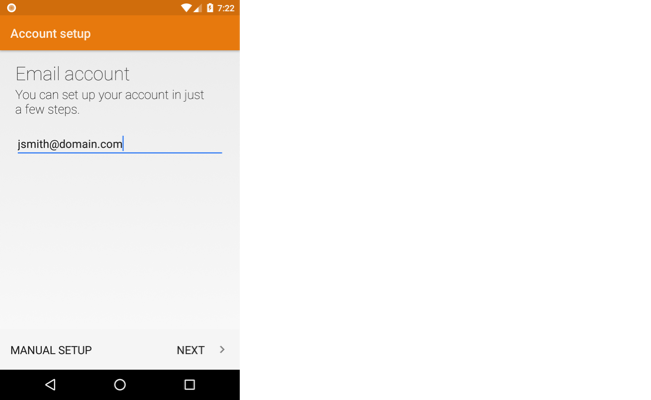
- Choose between IMAP or POP, then click Next. For more information see our IMAP or POP: Which One Should You Use? article

- Enter your email's password, then tap Next

- Enter the following information, then click Next. Some information may have been prepopulated from previous screens
Username This is your email address. Password This is the password to your email address. Server This is your mail server name. For more information about finding your email servers, see our email server article. Port This is the port number for your chosen account type. It will either be the IMAP or POP3 port numbers. Security Type This is the type of security the email will use - On the next screen, enter the following information, then tap Next
SMTP Server This is your mail server name. For more information about finding your email servers, see our email server article. Port This is the port number for your chosen account type. It will either be the IMAP or POP3 port numbers. Security Type This is the type of security the email will use Username This is your email address Password This is your email address' password - On the next screen, choose a sync frequency and check the boxes next to options you want.

- Tap Next
- On the next screen, enter the following information, then click Next:
Give this account a name (optional) This is a name that you will use to identify the email account on your phone. Your Name (displayed on outgoing messages) This is the name that will be displayed in the From line of outgoing emails.  The new email account should now be accessible from your Android Email app.
The new email account should now be accessible from your Android Email app.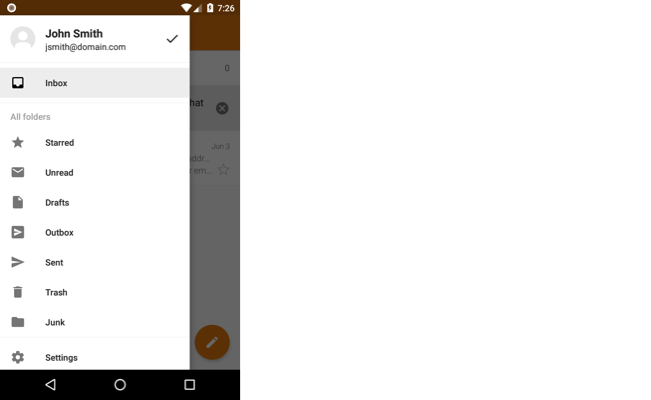
- Open up the Android Mail application

- Select Other in the list of email providers
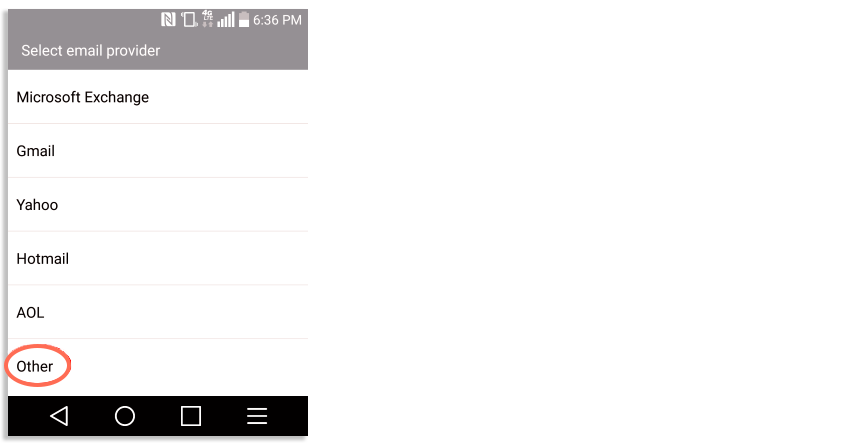
- Enter your email address and its password, then click Next
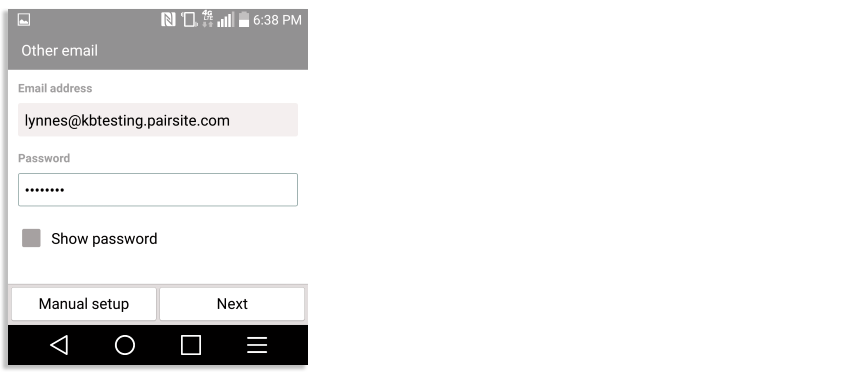
- Choose between IMAP or POP, then click Next. For more information see our IMAP or POP: Which One Should You Use? article
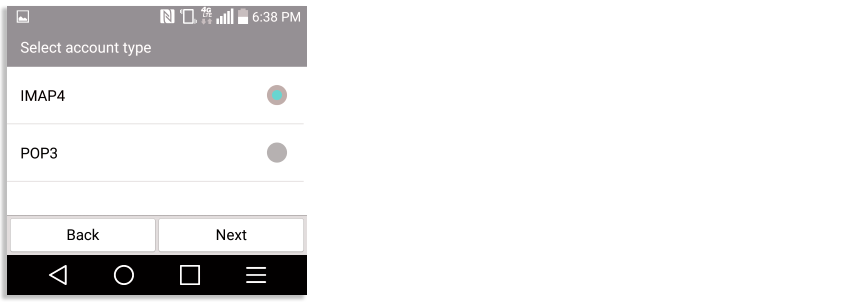
- Enter the mail server name for your incoming mail server
- Server names are always formatted: username.mail.pairserver.com. Replace username with your hosting account username.
- Choose your security type from the drop-down and enter the desired port number
- Under Username, type in your email address (user@example.com)
- Under Password, enter your hosting account password
- Click Next
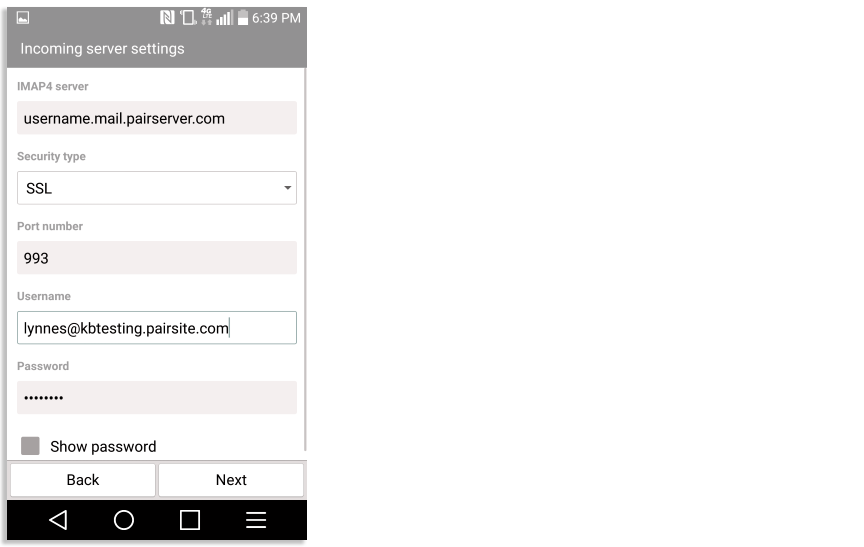
- Enter the server name for your outgoing mail server. Server names are always formatted: username.mail.pairserver.com. Replace username with your hosting account username.
- Choose your security type from the drop-down and enter the desired port number
- Your login credentials should be saved from when you last entered them. If they were not saved, enter them again
- Click Next
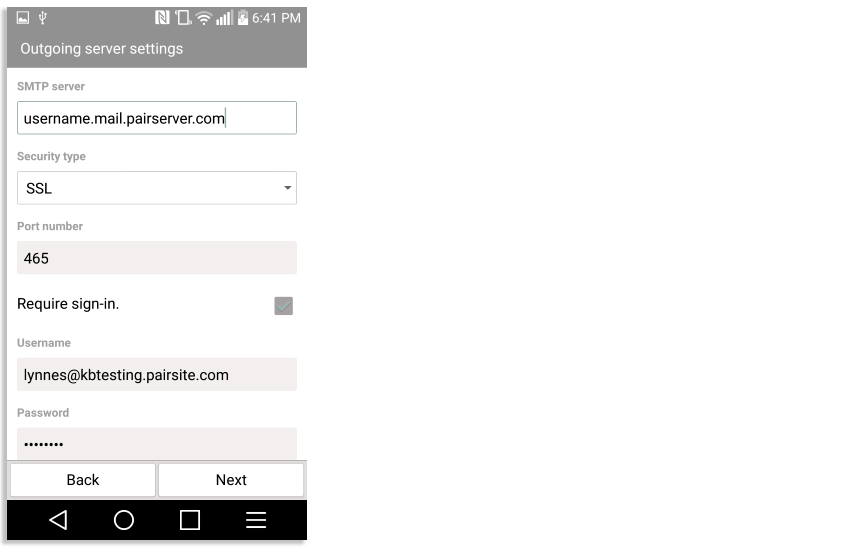
- Review the information on this page, then click Done

Using SSL to Secure Your Email
Pair Networks provides support for SSL/TLS and STARTTLS encryption for all IMAP, POP, and authenticated SMTP connections. Using encryption is an important way to prevent your password from being stolen.
POPS/IMAPS only secures the connection between your email reader and the mail server. Once it reaches the mail server, it will be in plain text. For additional security, you would need to encrypt the email message itself. The port for POPS is 995, the port for the IMAPS is 993, and the ports for encrypted authenticated SMTPAUTH are 465 and 587. These are the standard ports for these services, and you should not need to manually set them.
Please note that we replaced the secure certificate used to provide POPS, IMAPS, and SMTPS email services (sending and receiving email over SSL). Our SSL certificate vendor has changed to a new "root" certificate, which is recognized by most, but not all, email programs. If your email program begins returning errors and indicates that the server certificate is not recognized, please download the root certificate below and install it in your email program. The specifics of how to install a certificate will vary from program to program -- please consult the help files of your program for details.
Please also note that our mail servers use an SSL certificate. If you use this SSL option in conjunction with a domain name, your email reader may warn you that the domain names do not match. Some email readers will allow you to ignore this warning. In these cases, your incoming email will remain secure.
However, some email readers will not let you proceed if the security certificates do not match. If this occurs, please verify your incoming server settings as follows:
For accounts created prior to June 1, 2011, the server will follow this formula:
mailX.pair.com
(where X is your server number)
For accounts created on or after June 1, 2011, the server will follow this formula:
username.mail.pairserver.com
(where "username" is your main account username)


